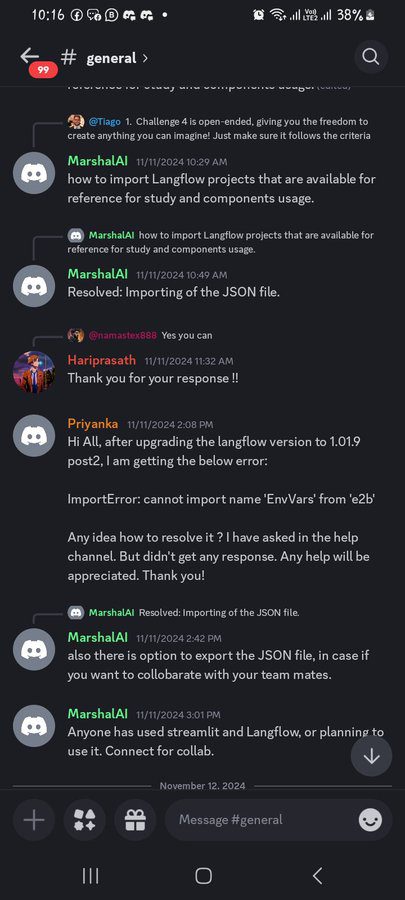Introduction to Langflow
In today’s fast-paced technological landscape, the demand for AI applications is skyrocketing. However, not everyone has the time or inclination to learn coding. Enter Langflow, a revolutionary low-code platform that allows users to create AI apps through a simple drag-and-drop interface. As highlighted in a recent tweet, Langflow is particularly useful for those who want to leverage AI for tasks like data analysis without delving into complex coding.
How Langflow Works
Langflow simplifies the app development process by providing pre-built components that users can drag and drop to create their desired AI applications. This approach is not only user-friendly but also significantly reduces the time required to develop functional AI tools. For instance, users can create AI agents that handle data analysis tasks, allowing them to focus on sourcing jobs while the AI agents perform the actual work.
The Rise of Low-Code/No-Code Platforms
The concept of low-code/no-code platforms is not new, but the integration of AI capabilities has taken them to the next level. According to an article on How AI can help you make computer game without knowing anything about coding, AI is dramatically lowering the barrier to software development, bridging the gap between creativity and technical skill. Platforms like Google’s AlphaCode 2 and Replit’s Ghostwriter are also part of this growing trend, making software development more accessible to non-coders.
Langflow’s Unique Selling Proposition
Langflow stands out in the crowded market of low-code platforms by focusing on generative AI applications. The platform combines DataStax’s Astra DB database with Langflow’s low-code tools, offering a comprehensive solution for generative AI development. This integration is particularly beneficial for developers and companies building GenAI applications, as it democratizes AI development and makes it more accessible. As Chet Kapoor, CEO and chairman of DataStax, mentioned in a TechCrunch article, the acquisition of Langflow will provide developers with additional resources and integrations to elevate their applications.
Challenges and Considerations
Despite the numerous advantages, low-code/no-code platforms are not without their challenges. A recent article points out that these platforms often struggle when it comes to scaling. Integrating AI capabilities can help address some of these issues, but it’s crucial for developers to be aware of potential limitations. For example, the lack of version-controlling systems like Git can be a deal-breaker for large projects.
The Future of AI in Software Development
The integration of AI in software development is not just a trend; it’s a paradigm shift. As noted in a report, companies that don’t allow their developers to use AI tools are unlikely to succeed. AI is transforming the coding industry by automating tasks, increasing efficiency, and lowering the barrier to entry for new developers. This is evident in the growing adoption of AI-powered coding tools like GitHub Copilot and OpenAI’s ChatGPT.
Conclusion
Langflow is a game-changer for non-coders who want to create AI applications. By leveraging the power of AI and a user-friendly interface, Langflow makes it possible for anyone to develop functional AI tools quickly and efficiently. As the demand for AI applications continues to grow, platforms like Langflow will play a crucial role in democratizing software development.
Related Articles
- Top 5 AI Apps for Content Writing
- Top AI Tools for Developers: Enhancing Coding Efficiency and Innovation
- Top 5 AI Tools for Teachers
- 5 Fun Learning Educational AI Apps
- AI Writing Assistants for Improving Content Quality
Looking for Travel Inspiration?
Explore Textify’s AI membership
Need a Chart? Explore the world’s largest Charts database
